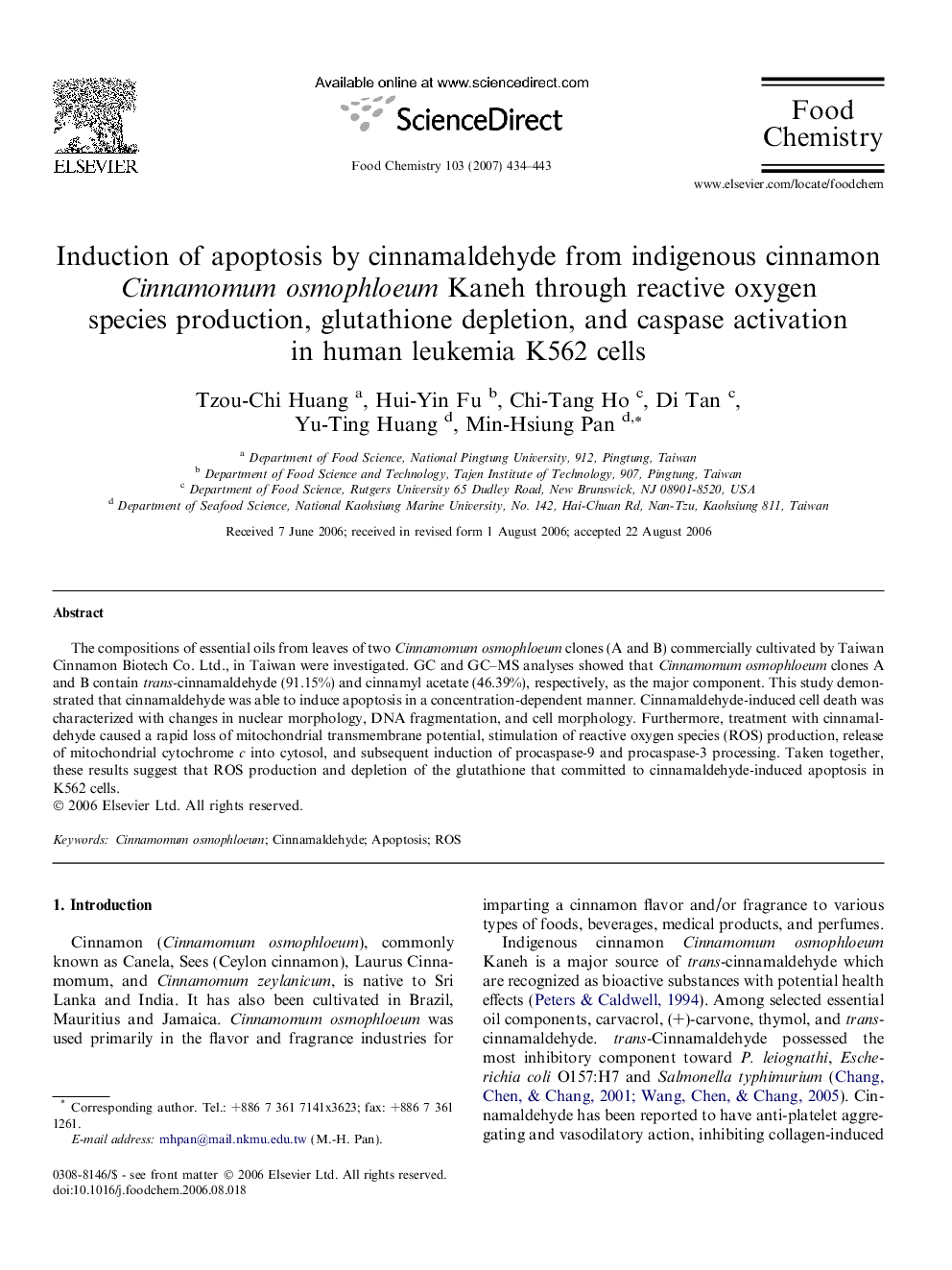| Article ID | Journal | Published Year | Pages | File Type |
|---|---|---|---|---|
| 1190608 | Food Chemistry | 2007 | 10 Pages |
The compositions of essential oils from leaves of two Cinnamomum osmophloeum clones (A and B) commercially cultivated by Taiwan Cinnamon Biotech Co. Ltd., in Taiwan were investigated. GC and GC–MS analyses showed that Cinnamomum osmophloeum clones A and B contain trans-cinnamaldehyde (91.15%) and cinnamyl acetate (46.39%), respectively, as the major component. This study demonstrated that cinnamaldehyde was able to induce apoptosis in a concentration-dependent manner. Cinnamaldehyde-induced cell death was characterized with changes in nuclear morphology, DNA fragmentation, and cell morphology. Furthermore, treatment with cinnamaldehyde caused a rapid loss of mitochondrial transmembrane potential, stimulation of reactive oxygen species (ROS) production, release of mitochondrial cytochrome c into cytosol, and subsequent induction of procaspase-9 and procaspase-3 processing. Taken together, these results suggest that ROS production and depletion of the glutathione that committed to cinnamaldehyde-induced apoptosis in K562 cells.
